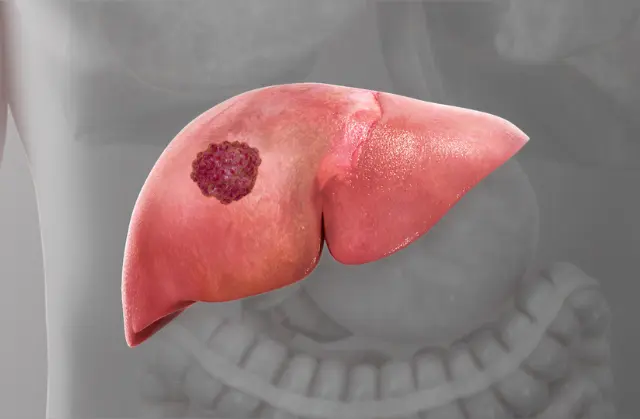Pioneering Advances in Radioembolization for Liver Cancer Treatment
Liver cancer presents a complex challenge,but modern medicine has made significant strides in offering effective, minimally invasive treatments. Among the most promising is Selective Internal Radioembolization, also known as Y-90 therapy.
As a specialist in Interventional Radiology in Mumbai, Dr. Amit Sahu is at the forefront of implementing these advanced techniques to provide personalized and effective care for his patients, improving outcomes and quality of life.
What is Radioembolization (Y-90 Therapy)?
A Targeted Attack on Liver Tumors
Radioembolization is a sophisticated,minimally invasive procedure that delivers high doses of radiation directly to liver tumors.
- The Core Concept: It uses tiny radioactive microspheres (about the size of red blood cells) that are injected into the hepatic arteries supplying the tumor.
- Precision Medicine: Unlike external beam radiation, Y-90 acts as a “internal radiation,” sparing healthy liver tissue.
- Dual Blood Supply: Liver tumors get their blood supply almost exclusively from the hepatic arteries, while healthy liver tissue gets most of its supply from the portal vein. This allows for a highly targeted attack.
Key Advances in Radioembolization Technology
The field of Interventional Radiology in Mumbai and globally is rapidly evolving, with several key advancements enhancing the safety and efficacy of Y-90 therapy.

Precision Dosimetry and Treatment Planning
- Beyond “One-Size-Fits-All”: Modern dosimetry uses sophisticated software to calculate the ideal radiation dose for each individual patient’s tumor.
- The Goal: To maximize tumor kill while minimizing risk to healthy liver.
Improved Microsphere Technology
- Types of Microspheres: Both Glass (TheraSphere) and Resin (SIR-Spheres) microspheres have seen refinements.
- Consistency and Delivery: Advances ensure more uniform microsphere size and activity, leading to more predictable radiation distribution.
The Critical Role of Pre-Procedure Simulation (Mapping Angiogram)
- Ensuring Safety: A simulation procedure is always performed 1-2 weeks before the actual Y-90 treatment.
Key Objectives:
- Identify Blood Vessel Anatomy: To map the arteries feeding the tumor.
- Block Off Risky Vessels: To prevent microspheres from traveling to other organs like the stomach, intestines, or pancreas.
- Test Lung Shunting: To measure how much activity might reach the lungs and adjust the dose accordingly.
Who is an Ideal Candidate for Advanced Radioembolization?
Expanding Treatment Horizons
Y-90 therapy is no longer just a last resort.Its applications have expanded significantly.
- Primary Liver Cancer (HCC): For patients who cannot undergo surgery or ablation.
- Metastatic Liver Disease: Particularly from colorectal cancer, neuroendocrine tumors, and breast cancer.
- Bridge to Transplant: To keep patients within transplant criteria by controlling tumor growth.
- Downstaging: To shrink large tumors, making them operable or eligible for other treatments.
The Y-90 Procedure: What to Expect with Dr. Sahu
A Step-by-Step Guide to Your Treatment
As an expert inInterventional Radiology in Mumbai, Dr. Sahu ensures a streamlined and patient-focused experience.
- Step 1: Comprehensive Evaluation: Review of medical history, imaging (CT/MRI), and determination of candidacy.
- Step 2: The Mapping Angiogram: The essential preparatory procedure to ensure safety.
- Step 3: The Y-90 Treatment Day:
- Performed under local anaesthesia.
- A tiny catheter is threaded from the groin or wrist into the liver arteries.
- The radioactive microspheres are delivered precisely to the tumor.
- The procedure typically takes 1-2 hours.
- Step 4: Recovery and Follow-up: Most patients go home the same day or after a short observation period. Follow-up scans are scheduled to monitor response.
Benefits of Choosing Advanced Radioembolization
- Minimally Invasive: No large incisions; faster recovery than surgery.
- Targeted and Potent: Delivers high radiation doses directly to the tumor.
- Preserves Liver Function: Spares the majority of healthy liver tissue.
- Outpatient Basis: Often performed as a day care procedure.
- Improved Quality of Life: Can effectively control cancer with minimal side effects.
- Synergistic with Other Therapies: Can be combined with systemic chemotherapy or immunotherapy for enhanced results.
A Comprehensive Approach to Patient Care
Expertise in Interventional and Neuro-Radiology
Dr.Amit Sahu’s specialized training ensures a high level of expertise in complex image-guided procedures.
His proficiency in Interventional Radiology in Mumbai is complemented by his deep knowledge of Interventional-Radiology treatments in Mumbai, reflecting a commitment to mastering the most advanced minimally invasive techniques across specialties.
This comprehensive skill set allows for a meticulous approach to complex cases, including those where liver cancer may have unique vascular challenges.
Your Consultation with Dr. Amit Sahu
- Personalized Assessment: A thorough review of your specific diagnosis and overall health.
- Clear Communication: A detailed explanation of the procedure, benefits, and potential risks.
- Collaborative Decision-Making: Working with you and your oncologist, hepatologist to create the best possible treatment plan.
Frequently Asked Questions (FAQs)
What are the side effects of Y-90 Radioembolization?
Most are mild and may include fatigue, nausea, abdominal pain, or a low-grade fever, known as “post-embolization syndrome.”
How soon will I know if the treatment worked?
Response is typically evaluated with a PET/CT or MRI scan 4-8 weeks after the procedure.
Is Radioembolization painful?
The procedure itself is not painful. Some post-procedure discomfort is manageable with medication.
Can this treatment be repeated?
Yes, depending on liver function and response, treatments can be repeated or targeted to different lobes of the liver.
Conclusion: A Beacon of Hope in Liver Cancer Care
The advances in Radioembolization represent a significant leap forward in the fight against liver cancer. This targeted, effective, and minimally invasive treatment offers new hope for many patients who previously had limited options.
Under the care of a skilled specialist like Dr. Amit Sahu, whose expertise spans advanced Interventional Radiology in Mumbai, patients have access to world-class treatment right here in Mumbai.
If you or a loved one is facing a diagnosis of liver cancer, schedule a consultation with Dr. Amit Sahu to discuss if advanced Radioembolization is the right path for you.